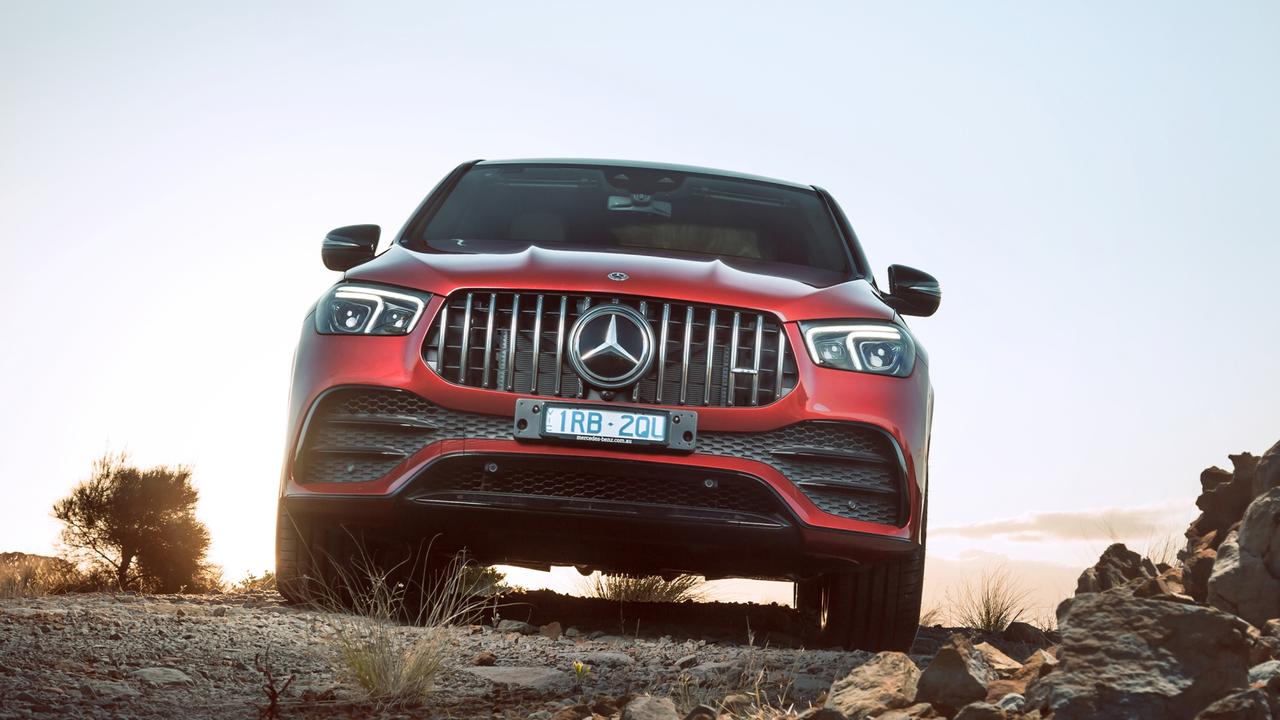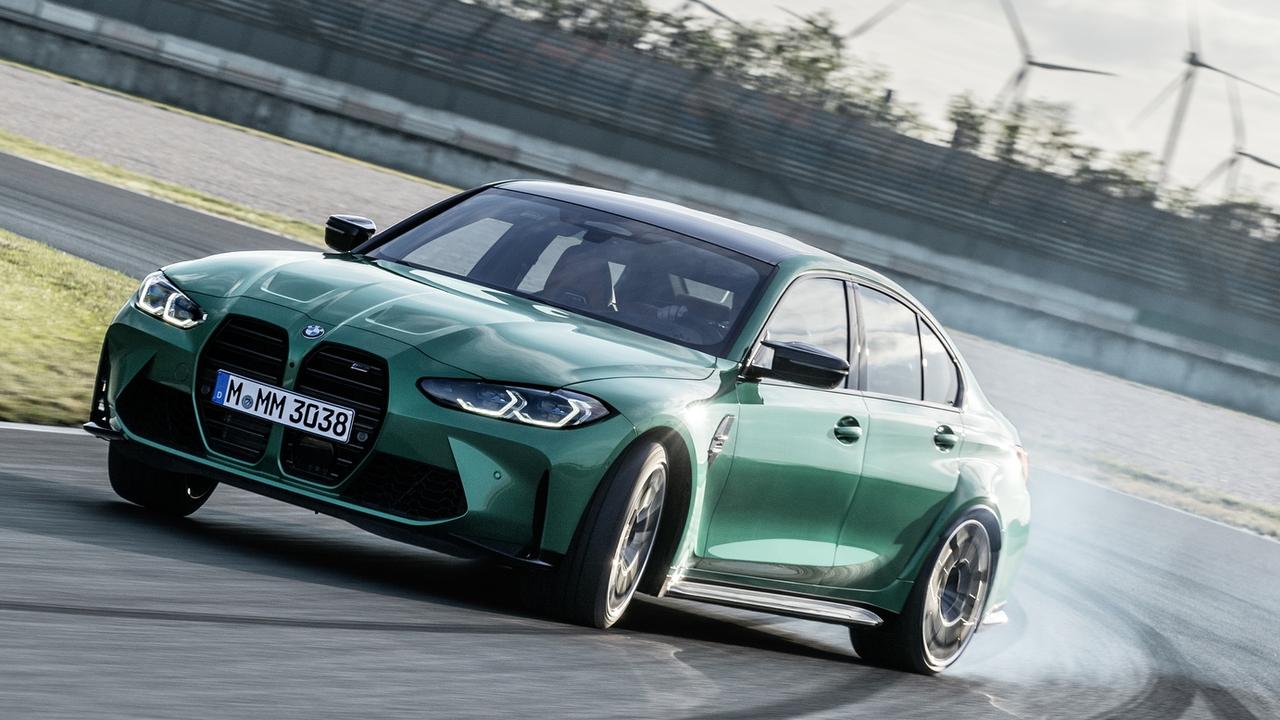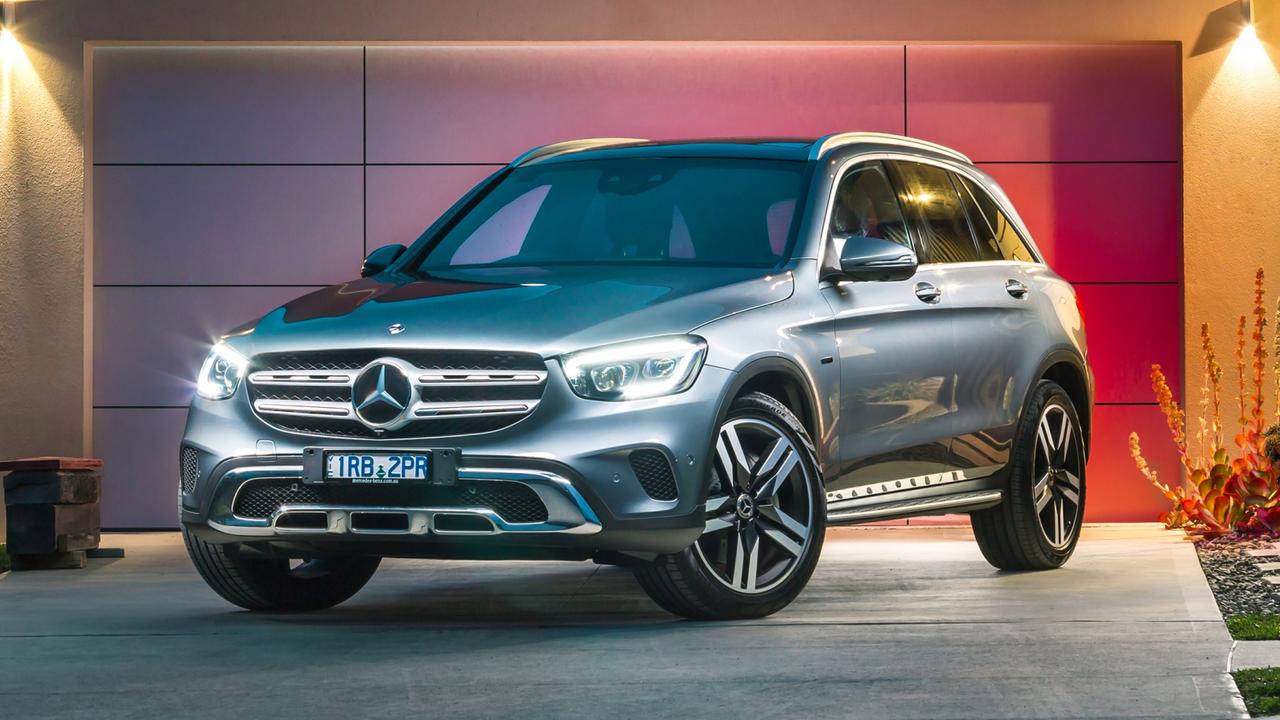Updated Audi R8 supercar reviewed
AUDI’S most expensive model might not look and feel as brash as its rampaging cousin but underneath there are lots of similarities.
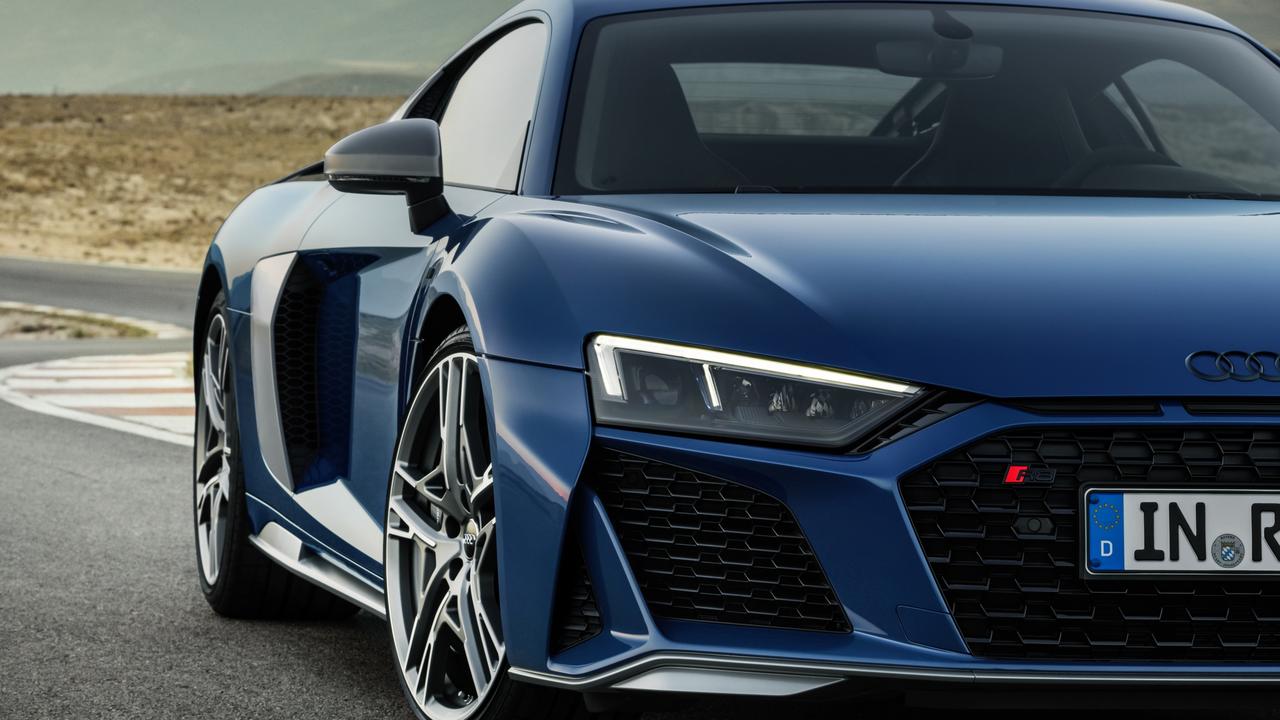
The current R8 knows the pain of having a high-achieving sibling. Audi’s mid-engined range-topper is closely related to the Lamborghini Huracan, sharing the under-body structure, V10 engines and gearboxes.
The Audit is supremely well engineered and hugely fast, delivering its performance with brutal efficiency. But it lacks much of the theatre of its more charismatic sibling, both in terms of design but also the way it drives.
Indeed, against the brash talents of the segment it competes in you’d have to say it was the quiet, mousy one.
A modest set of mid-life revisions, to arrive in Australia late next year, don’t transform the R8 into a ballroom diva. But reacquaintance does serve as a useful reminder about how good the fundamentals still are.
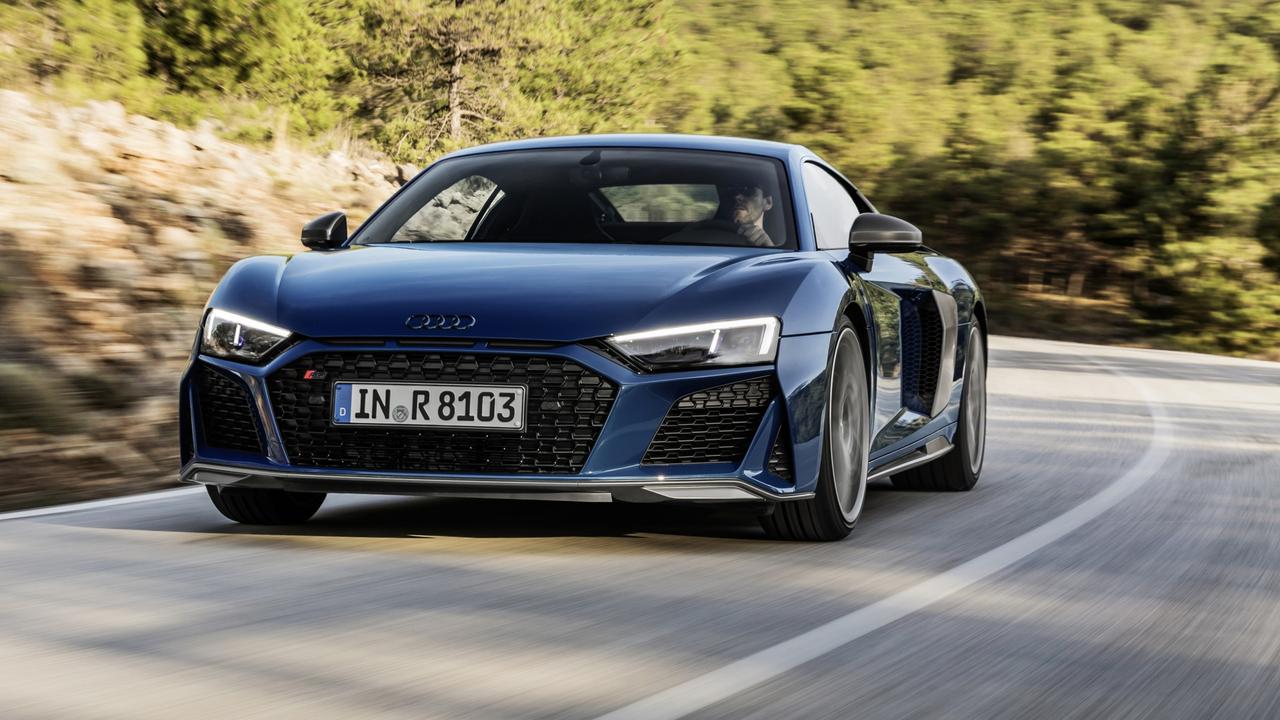
Design changes are limited to some nipping-and-tucking at the front and rear. The new R8 gets a wider grille, more angular headlights and upright winglet-style apertures at the edges of its front bumpers.
Look closely and you’ll also see a trio of intake slots at the base of the bonnet, this is apparently a tribute to the Audi Sport Quattro rally car and a feature we can expect so see spreading across the range; the new A1 hatchback features them as well.
The rear gets a bigger diffuser and new oval tailpipes in place of the straight-edged exhausts of the current car.
Inside the cabin is effectively unchanged, apart from a couple of trim tweaks. That means a pared-back design without a central display screen, the R8’s digital instruments taking on navigation and other functions when required.
It feels solidly constructed but the high percentage of generic Audi parts limits the sense of specialness, given the R8’s price tag.
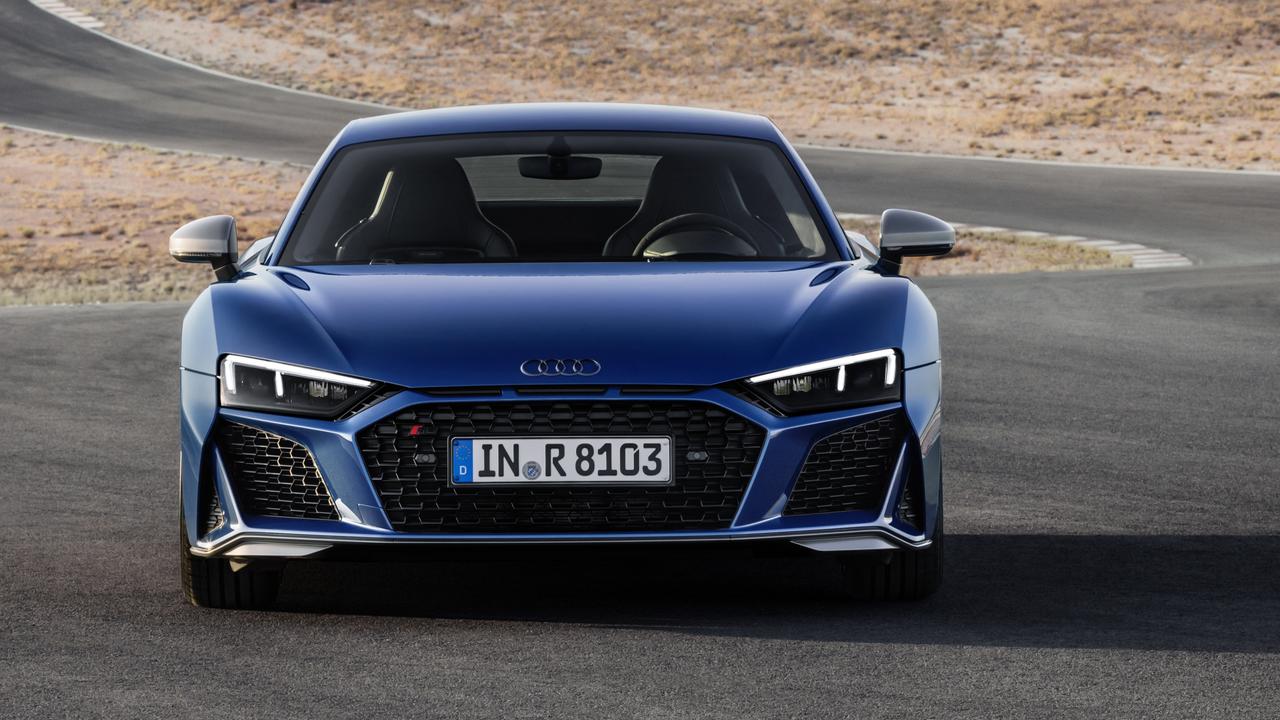
The R8 never felt short on power but gets a hike anyway. In standard trim, the 5.2-litre V10 produces 419kW, a 22kW improvement. The enhanced Performance puts out a stonking 456kW (and 580Nm), representing a 7kW boost on the outgoing ‘Plus’ variant. (Audi Australia is still debating whether we’ll get both power outputs, or just the range-topper with a circa-$400,000 price tag.)
Our test drive took place exclusively on track at the private Ascari Race Resort in the south of Spain, where the R8 Performance felt brutally quick.
The naturally aspirated V10 can’t provide the effortless low-down shove of turbocharged rivals but compensates with far more linear responses and a greater enthusiasm for exploring the upper reaches of its towering rev range.
It’s not as shouty as the Huracan under hard use but there’s still a compelling snarl to the R8’s exhaust note that encourages such vigour. The twin-clutch gearbox changes with lightning speed under manual control in the car’s aggressive Race mode but still does a decent impression of an automatic when used with less intensity.
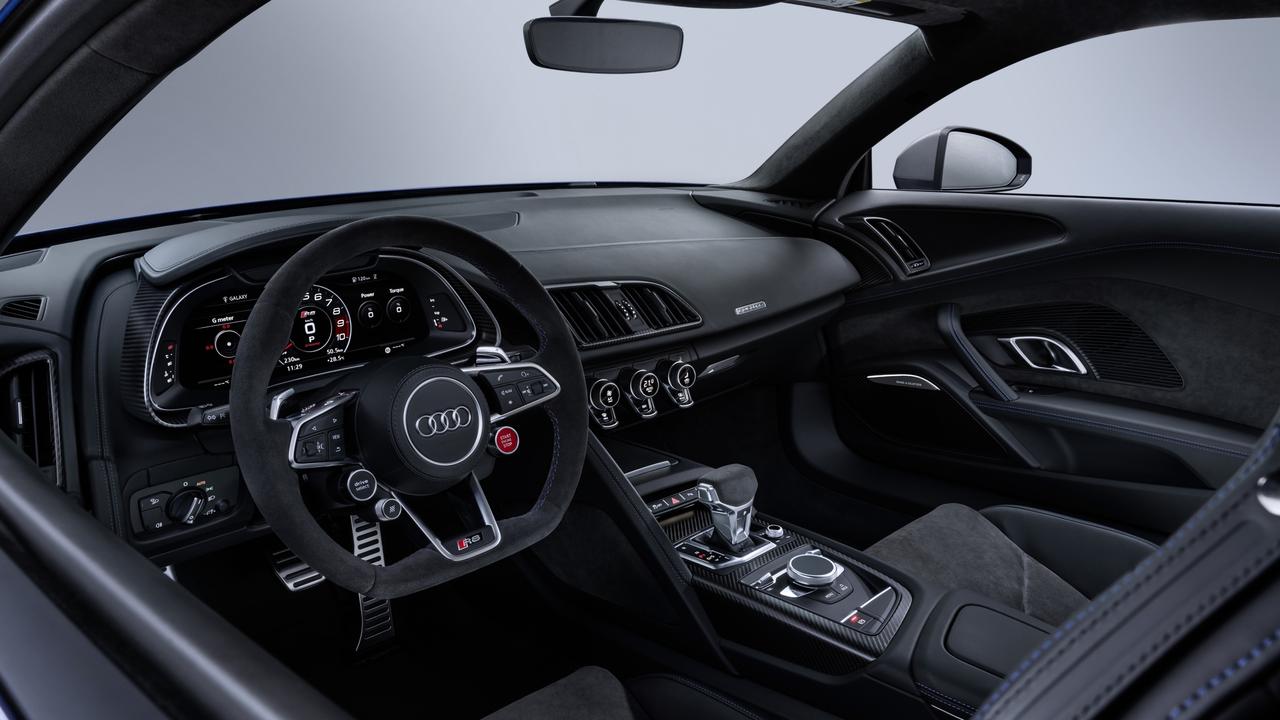
Audi says the tweaked chassis settings are intended to sharpen the driving experience when pushed, with the significant hardware change being the arrival of a part-carbon anti-roll bar at the front.
We drove test cars with and without the optional active steering, which changes the rack ratio according to speed. On Ascari’s tighter turns this did a fine job at reducing the amount of input required to get the front end heading towards an apex, but the need to add more lock at higher speeds felt counter-intuitive. The regular steering requires more arm-twirling but feels more natural.
The revised R8 performs well on track but the driving experience still has a rather aloof feeling. It’s effective rather than frisky, the quattro all-wheel drive prioritising grip and traction over the ability to use the throttle to influence its cornering attitude.
Press really hard and the rear axle can be felt starting to move to help the car turn but it doesn’t go further than that without fully de-energising the stability control, something few owners are likely to want to do. There’s little sense of playfulness to the way the R8 demolishes a racetrack, it’s all business.
One grumble remains the brakes, which don’t seem to have been improved over the current car. The R8 Performance comes with carbon-ceramic discs as standard and retardation levels are impressively high.
Audi claims that cleverer stability control means the new R8 can stop from 100km/h in up to 1.5 metres less room than the last one — having gone from rest in the benchmark sprint in 3.1 seconds — but the pedal is much too soft and lacks the feel necessary to accurately modulate their effect.
On lighter road duties they will undoubtedly feel far better but they really don’t seem to enjoy life on track.
We’re going to have to wait the best part of a year for the revised R8 to make it to Australia, with the official line being to expect it in the fourth quarter of 2019. Both Roadster and Coupe versions will continue to be offered, and we’re told to expect pricing to stay broadly similar, meaning a substantial discount over the very similar Huracan. “Sensible” and “supercar” might not be an obvious pairing of words but the R8 makes them work together.
Audi R8 Performance
Price: $400,000 (est)
Safety: Not tested
Engine: 5.2-litre V10, 456kW/580Nm
T hirst: Not tested
0-100km/h: 3.1-sec

